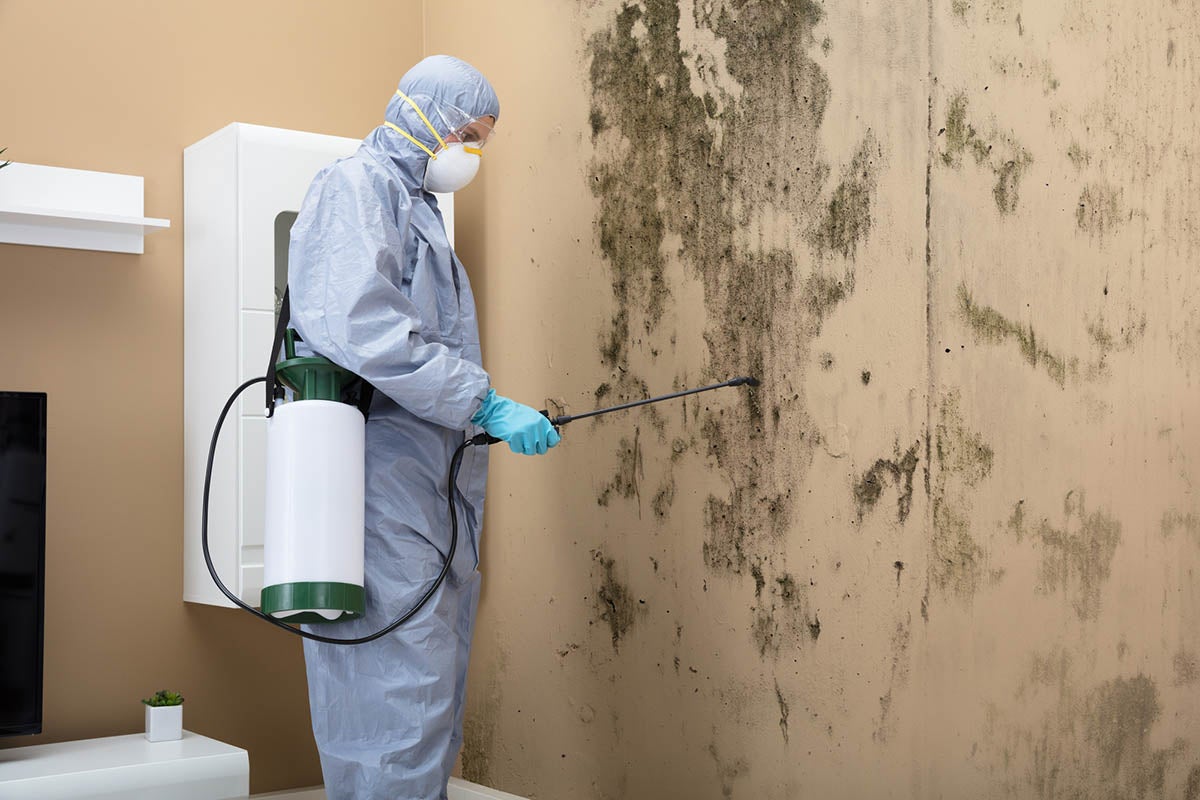Effective Message Mold Remediation Solutions for Your Home
Mold development in homes can be a persistent concern, typically needing a systematic approach for efficient post-remediation services. From comprehending the variables that add to mold and mildew development to carrying out appropriate cleaning methods and dampness control measures, the process can be elaborate yet important for maintaining a healthy living atmosphere. After mold remediation.
Comprehending Mold And Mildew Development Variables
The main factor contributing to mold and mildew growth is moisture. Mold spores call for moisture to germinate and grow, making wet or moist environments extremely vulnerable to mold and mildew infestations.

Moreover, air movement and light exposure can affect mold growth. Areas that do not have correct ventilation and natural light are extra susceptible to mold growth. By attending to these variables comprehensively, people can successfully mitigate mold and mildew growth and guard their living environments.
Correct Mold And Mildew Cleansing Techniques
Using reliable cleaning approaches is vital in resolving and avoiding the reappearance of mold contamination in interior environments. The very first action in correct mold and mildew cleaning is to include the damaged area to avoid the spread of spores to unpolluted areas.

Implementing Wetness Control Procedures
To effectively avoid mold and mildew growth and contamination in interior settings, executing dampness control actions is critical. Moisture is the primary element that fuels mold and mildew growth, making it critical to handle humidity levels within the home. One effective action is to make use of dehumidifiers to maintain indoor humidity levels below 60%. Additionally, making sure correct air flow in locations susceptible to moisture accumulation, such as kitchen areas and washrooms, can help in reducing the threat of mold development. Consistently examining and fixing any type of leakages in plumbing, roofings, or home windows is also essential in stopping excess dampness build-up. Utilizing exhaust followers while food preparation or showering, and permitting air circulation by keeping furnishings slightly far from walls can assist in dampness control. Furthermore, using moisture-resistant materials in high-humidity locations, such as mold-resistant drywall and paints, can be useful. By faithfully executing these wetness control actions, house owners can properly reduce the possibility of mold recontamination and maintain a healthy and balanced indoor atmosphere.
Making Use Of Natural Removal Solutions
After effectively applying dampness control steps to stop mold and mildew growth in interior settings, home owners can now discover the performance of all-natural remediation solutions in preserving a healthy space. All-natural removal solutions use eco-friendly approaches to fight mold and mildew and mold, making them a prominent option for those looking for safe alternatives. One such option is utilizing vinegar, a natural antimicrobial representative, to tidy and disinfect surface areas infected by mold. Just thin down vinegar with water and spray it onto the influenced areas, enabling it to rest for a couple of hours prior to wiping tidy. Additionally, tea tree oil, recognized for its antifungal residential properties, can be blended with water and sprayed onto mold-infested surface areas to prevent more growth. One more natural choice is hydrogen peroxide, which can successfully kill mold and mildew on various surfaces without leaving harmful residues behind. By incorporating these all-natural removal remedies right into their cleaning routines, homeowners can efficiently battle mold and mildew development while promoting a much healthier interior environment for themselves and their households.

Maintaining a Mold-Free Setting
In order to stop mold and mildew recurrence and make sure a regularly mold-free environment, it is vital for property owners to apply aggressive upkeep methods. Consistently checking areas prone to mold and mildew growth, such as bathrooms, basements, attic rooms, and kitchen areas, is essential. Dealing with any kind of leakages, water damages, or excess wetness quickly can significantly reduce the risk of mold development. Post Remediation verification. Proper ventilation in locations with high moisture levels is likewise vital to avoid mold development. Making use of dehumidifiers or exhaust followers can aid keep ideal wetness degrees and prevent mold go to website and mildew spores from thriving.
In addition, keeping cleanliness in the home is essential for mold avoidance. Keeping indoor plants in check and making certain correct water drainage in outdoor landscaping can lessen dampness build-up, lowering the possibility of mold infestations.
Verdict
In conclusion, it is vital to attend to mold and mildew development aspects, use appropriate cleaning strategies, carry out wetness control steps, utilize natural remediation remedies, and maintain a mold-free atmosphere in order to effectively deal with article mold removal in your home - Post Mold Remediation. By complying with these techniques, you can stop mold from reoccuring and make sure a healthy and balanced living environment for you and your family members
The main aspect adding to mold development is dampness. Mold spores need moisture to sprout and thrive, making moist or damp atmospheres very find out susceptible to mold and mildew infestations.To effectively prevent mold development and contamination in indoor environments, applying moisture control measures Our site is vital. Additionally, making sure correct ventilation in areas vulnerable to moisture accumulation, such as cooking areas and shower rooms, can help decrease the danger of mold and mildew development.After effectively executing dampness control procedures to stop mold growth in indoor settings, house owners can currently discover the performance of all-natural removal remedies in maintaining a healthy and balanced living space.